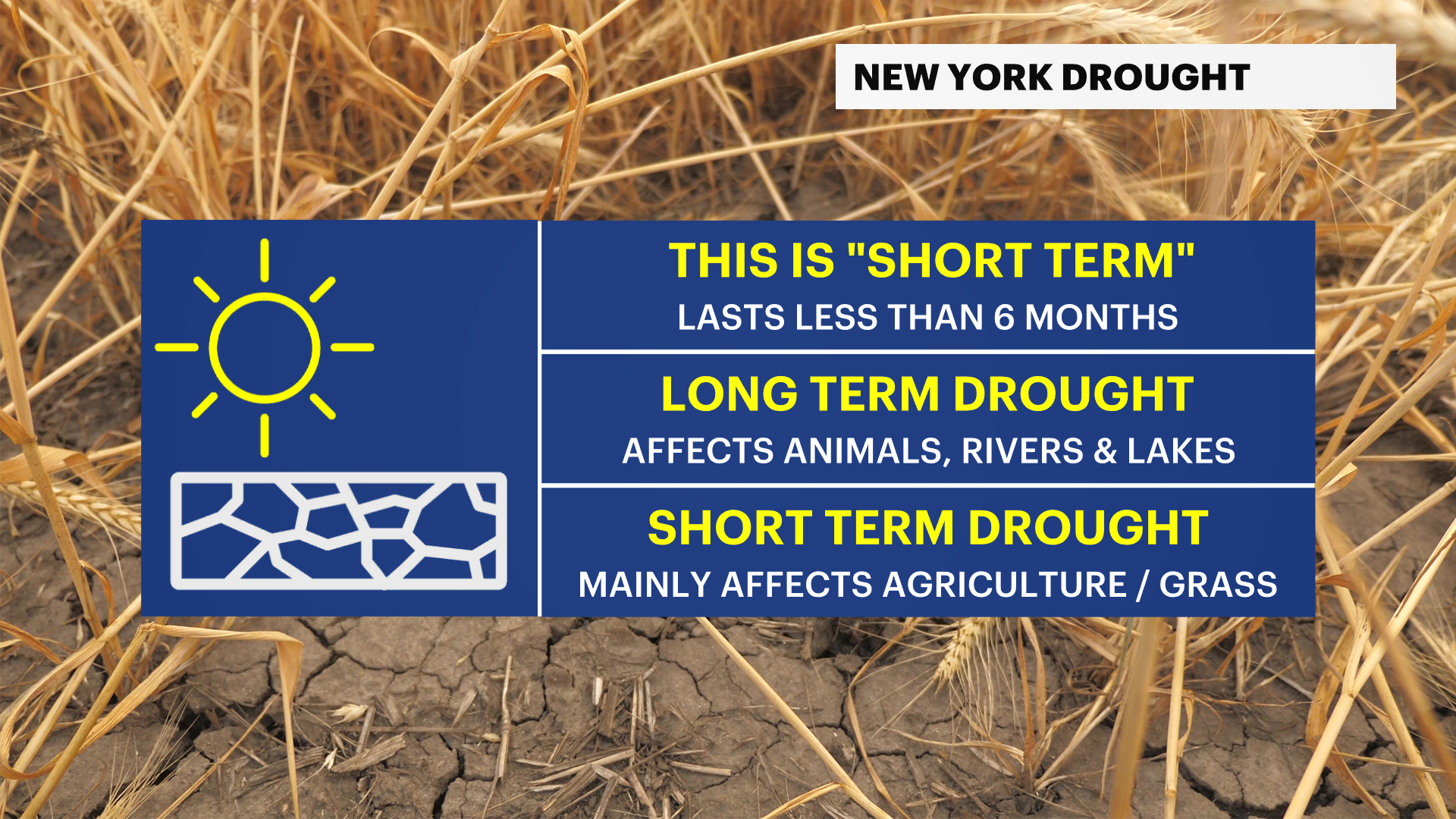More Stories

It's been a summer of extreme weather across the county. This week marks one month where at least half of the country has reported "moderate drought" in the U.S. Drought Monitor. The Hudson Valley is no exception.
On Tuesday afternoon, Gov. Kathy Hochul directed the New York State Department of Environmental Conservation to issue an updated drought watch, which now includes the entire Hudson Valley except for Westchester County. According to the Agency, "A 'watch' is the first of four levels of state drought advisories. There are no statewide mandatory water use restrictions in place under a drought watch, but residents are strongly encouraged to voluntarily conserve water. Local public water suppliers may require conservation measures, depending upon local needs and conditions."
The drought is caused by a combination of below average rainfall this summer and above average temperatures.
Putnam County has experienced the biggest rain deficits in the entire state over the past two months.
Parts of the county have reported rain deficits of 6 inches. Meanwhile in Westchester County, White Plains has reported average temperatures more than 2 degrees above normal since June 1.
As of Aug. 15, the summer rain deficit is 2.78 inches in White Plains. Temperatures have been consistently warm across our region. In Poughkeepsie, several record high temperatures were broken this summer. It reached 99 on Aug. 4, which was the hottest summer day in Poughkeepsie since 2011.
The U.S. Drought Monitor has classified nearly the entire Hudson Valley under at least "abnormally dry" conditions. As of the most recent report from Thursday, Aug. 11 - the Hudson Valley entered "severe drought" status for the first time in more than five years (March 14, 2017). Severe drought includes most of Putnam County as well as southeast Dutchess County and West Point in Orange County.
A severe drought is a level 3 out of 5 on the US Drought Monitor's Classification Scheme. According to the Drought Monitor's Table of Impacts, the severe drought classification often indicates areas where water quality is becoming poor, irrigation ponds are dry, water restrictions are implemented, and groundwater is declining.
There are also effects on specialty crop yields and wildlife may move to farms to forage for food.
The drought may not be around for long. It's been classified as a "short-term drought" which typically lasts less than six months. Short term droughts have impacts on agriculture and grasslands as well as gardens and ornamental landscaping.
Long-term droughts have farther reaching impacts on agriculture, hydrology (lakes and rivers), and ecology (native plants and wildlife). Long-term droughts persist for more than a year.
The latest drought monitor will be released on Thursday, Aug. 18. We're anticipating the drought conditions in the Hudson Valley will be worse in the new outlook.




More from News 12
1:42

Ken Jenkins declares victory in race for Westchester County executive

RESULTS: Westchester 2025 local election results
1:59

High and damaging winds are expected later this week

Live Blog: News 12 Westchester/Hudson Valley Election Day 2025
1:34

Democrat Justin Brasch declares victory in race for White Plains mayor
1:56
